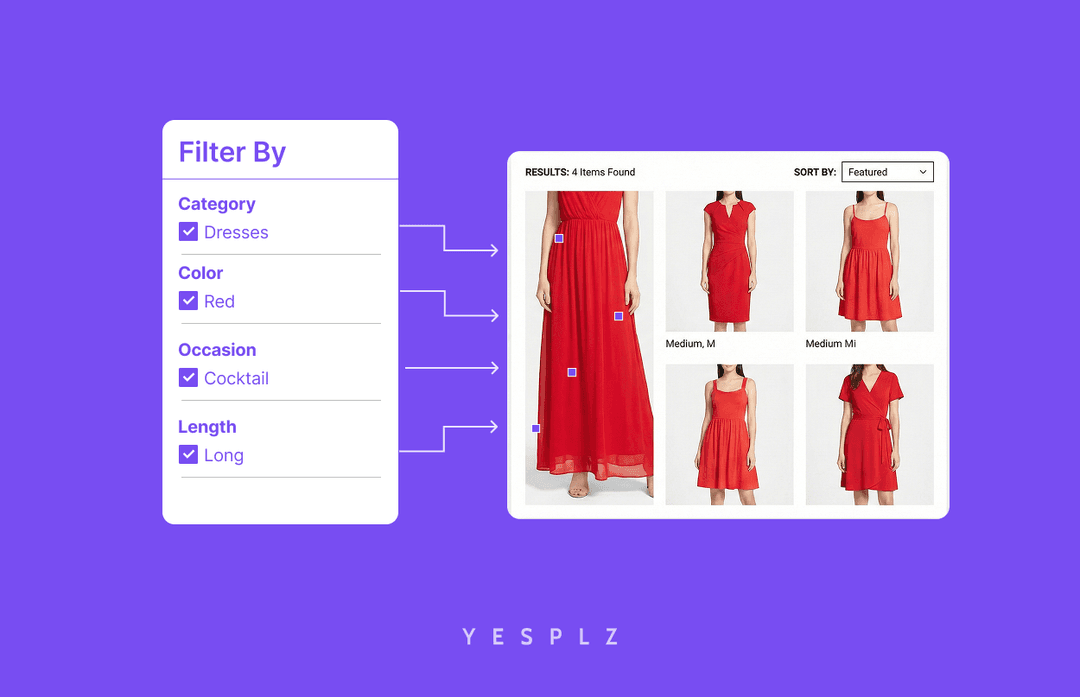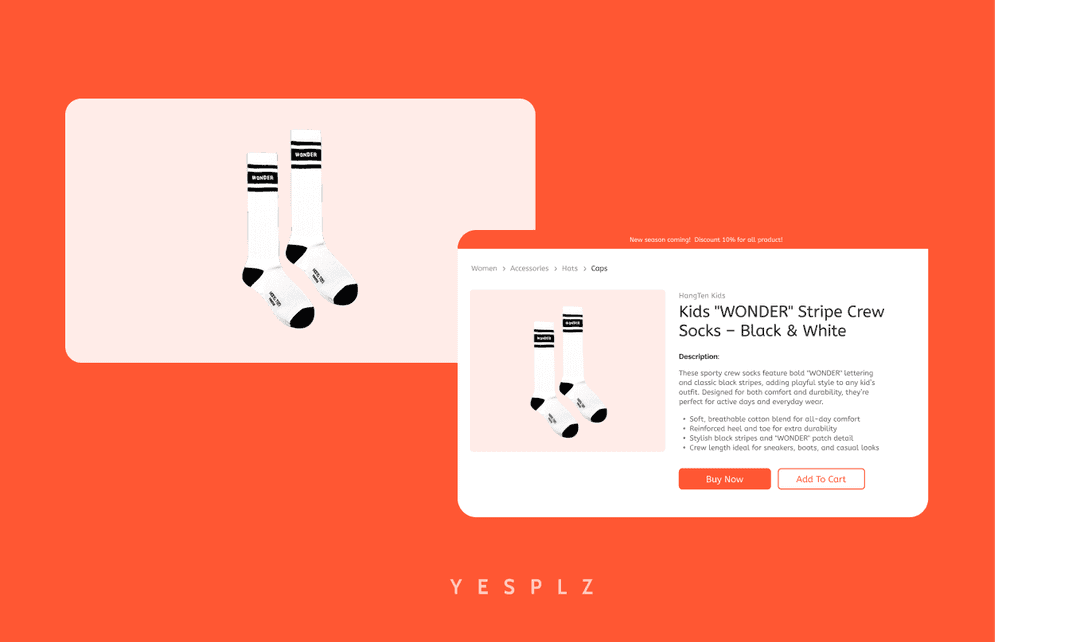A Cheat Sheet
by Jess Erdman, Content Marketing LeadMay 2022

The fashion visual search race is heating up, as major retailers like Shein and Asos are integrating the technology into their eCommerce sites. Research by Gartner shows that retailers who are early adopters of visual search are projected to increase their digital commerce revenue by 30%.
Besides revenue, there’s another new currency: shoppers’ attention. With an overwhelming number of options and decreasing attention spans, the struggle to keep shoppers’ attention is the next battle for retailers.
Fashion visual search uses artificial intelligence to create an alternative to traditional text-based search–offering a new pathway to keep shoppers engaged and moving through the purchase funnel. A superior product discovery experience is how your eCommerce can stand out to shoppers–and fashion visual search is the way forward.
But, how do you choose a fashion visual search solution? The number of options can seem daunting–and it can be difficult to decipher the “lingo” behind many of the explanations. That’s why we put together these tips–the 6 tips that will help you choose the right visual search solution.
1. Analyze the product attributes that your customers want.
Do you know which product attributes do your customers care about the most? Perhaps your data shows that your customers are concerned about different types of silhouettes or necklines because you’re selling dresses. Or, perhaps they’re searching for a specific length, like midi-skirts, because of a personal preference. By understanding product attributes, you can unlock the key to providing a superior fashion visual search experience.
A comprehensive visual search solution will include the key attributes that align with customer behavior. Ideally, a visual search solution will be able to use artificial intelligence to tag product attributes. But first, you need to understand which product attributes customers are searching for, before looking at technology.
2. Is there customized micro-tagging for your specific business needs?
The next question that you should ask is whether the visual search solution can micro-customize the tagging process for your business needs.
Perhaps your eCommerce sells very specific styles for a particular set of customers–or your shoppers are very sophisticated and want quilted jackets or oversized collars. It’s unlikely that a run-of-the-mill fashion visual search solution will come configured to tag those attributes–but it is possible for advanced visual search solution, like the YesPlz Style Filter, to learn the micro-attributes that your business needs. By using fashion artificial intelligence, advanced visual search solutions can easily adapt–without the need for manual tagging of product attributes,
3. Can users filter by occasion or theme?
Thematic filters help users search more naturally, when they’re looking for outfits for a specific season or type of occasion (such as work). Creating thematic filters manually is time-consuming and inconsistent–we all have different definitions of what defines the border between “work” and “daytime” dresses, for example. But, through fashion AI, we can train our algorithm to be laser-accurate in recognizing themes and occasions, appealing to users that want to explore within a category.
Why is thematic search so difficult to get right? It’s extremely subjective, so it’s difficult to remain consistent in identifying product attributes that would contribute to a particular occasion. With fashion AI, algorithms can learn and even suggest related products within a particular theme (for example, a user searching for “beach clothing” might be interested in not only a swimsuit but sandals and a cover-up as well).
When choosing a fashion visual search solution, make sure to ask how the solution is tagging accurately, so you’re not stuck manually tagging occasion or thematic product attributes. At YesPlz AI, we have a comprehensive system to tag, that includes fashion annotators from Parsons and FIT to train our AI to be even more accurate when it comes to fashion.
4. How noisy are the pictures in your product catalog?
Not all visual search solutions are the same–and some may struggle to pick up product attributes if your product pictures are full of different colors, objects, or noisy (this can be especially true for brands that rely on user-generated content for product images). If your product images are noisy, then you’ll need to select a powerful visual search solution that can quickly learn and identify product attributes in your images.
No matter how noisy your product images are, there are still numerous ways to train deep learning to recognize the features–you just need to make sure that the visual search solution that you choose has the capability to identify product features in every kind of image.
5. Is the fashion visual search enhanced by text?
When selecting a visual search solution, a hybrid solution is ideal. This means that the fashion visual search solution can understand both image and text, because image alone might not provide enough information to tag product attributes.
At YesPlz AI, we use a hybrid approach that embraces both image and text. When looking at a product image from top to bottom, our AI refers to text information like product title to know where to look. For example, the product title will say “top”--and our AI will know to ignore pants, shoes, or hats in the picture and to focus on the top. Our AI can also read the product description and use the description as a reference to improve image recognition accuracy. In short, YesPlz AI’s technology understands both image and text.
Schedule a free 20-minute consultation
6. Most importantly, does the visual search solution understand fashion?
Not all fashion visual search solutions have an innate understanding of fashion. You may notice that the solution isn’t great at recognizing or tagging the latest fashion trends–and that can be difficult due to changing fashion taxonomies. However, a good visual search solution can tag the key fashion attributes that shoppers are searching for. You can test this by asking for a quick demo of the product: are the product attributes being tagged accurately?
Finding the best fashion visual search solution can seem like a difficult task, but once you break it down into steps, your fashion eCommerce can easily select a solution that will work for your unique business needs.
In short, you’ll need to:
1- Know which product attributes your customers are searching for
2- Keep an eye out for customized micro-tagging
3- Look for a solution that allows for thematic filters and can recognize product attributes in every kind of picture background
4- Choose a hybrid fashion visual search solution
5- Make sure the fashion visual search solution understands fashion
With these tips in mind, we encourage you to demo and explore different solutions before making your decision.
If you’re looking for a fashion visual search solution that checks all the boxes, we recommend that you try YesPlz AI. We offer comprehensive, hybrid visual search that can help elevate your fashion eCommerce.
Written by Jess Erdman
Content Marketing Lead
I'm passionate about creating cool content. The best part? I get to learn new things about fashion tech and ecommerce everyday. Have an idea or opinion about this article? Reach out at jess@yesplz.ai

Stop losing sales to poor product filtering. Discover how AI simplifies creating Shopify filters, saving you 25-50 hours per 100 products.
by YesPlz.AI

Automate Shopify product pages and cut 50–100 hours of manual work. AI generates product titles, descriptions, and metadata instantly from product images.
by YesPlz.AI